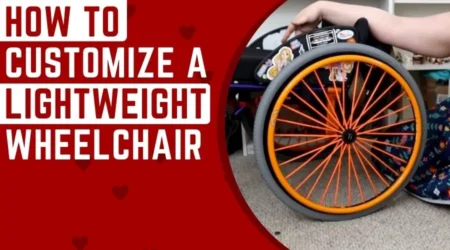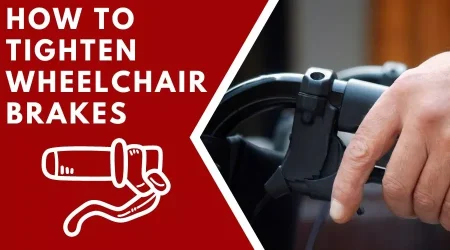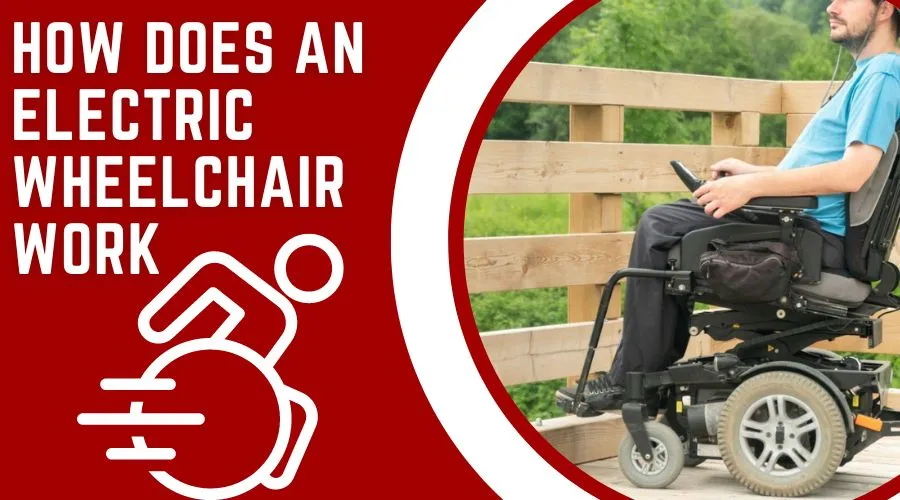
Electric wheelchairs provide freedom of movement for those with limited mobility. They are powerful, intuitive machines that are designed to make life easier.
But how does an electric wheelchair work? To answer this question, it is important to explore the science behind these amazing machines.
Understanding the mechanics, design, and technology of electric wheelchairs will help us to appreciate the complexity and ingenuity of their design.
From the battery and motors to the joystick and sensors, electric wheelchairs are truly a marvel of engineering and technology.
By delving into the science of electric wheelchairs, we can gain a better appreciation of how they can help to improve the lives of those with limited mobility.
How Does An Electric Wheelchair Work?
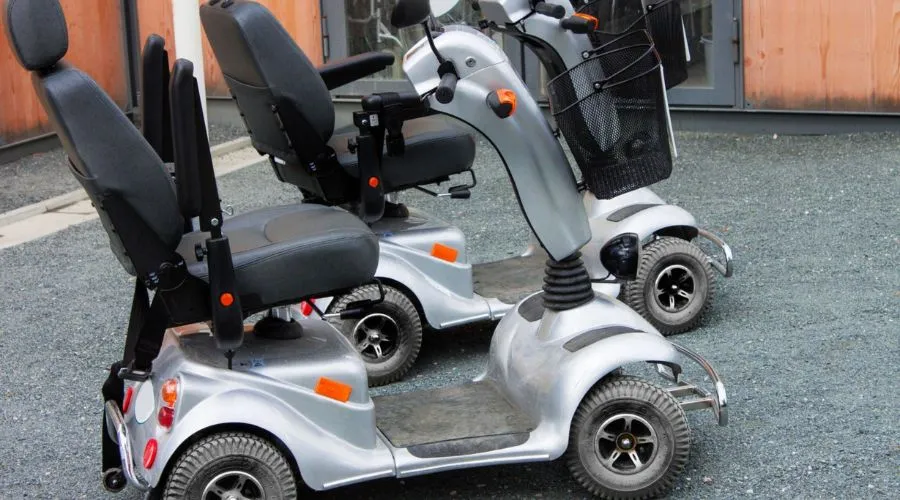
The major component behind the working of electric wheelchairs is the motor that connects to the wheels that are controlled with an electronic joystick and it’s all powered by batteries.
The electric motor is connected to the wheels either through a gear system or directly. When the user moves the joystick or touchpad, it sends a signal to the motor, which then activates and propels the wheels in the desired direction. The speed of the wheelchair can be controlled by adjusting the amount of power sent to the motor.
The electric wheelchair also includes a battery, which stores the electrical energy needed to power the motor. The battery is typically located on the back of the wheelchair and can be easily removed and charged using a standard electric outlet.
It is important to note that electric wheelchairs are different from manual wheelchairs, which are powered by the user pushing the wheels with their hands or feet. Electric wheelchairs are also different from scooters, which are powered by a motor and are designed to be used on the street.
Additional features may include adjustable seat height, reclining backrest, and adjustable footrests, to provide a comfortable and customized fit for the user. Some electric wheelchairs also have built-in lights and turn signals, making them more visible and safe to use in low-light conditions.
It is important to note that electric wheelchairs are not intended for outdoor use on public roads, sidewalks, or shared-use paths. They are primarily intended for indoor use and use on private property. However, some electric wheelchairs are equipped with all-terrain wheels and suspension systems to allow them to travel on rough terrain and outdoor surfaces.
Types of Electric Wheelchairs
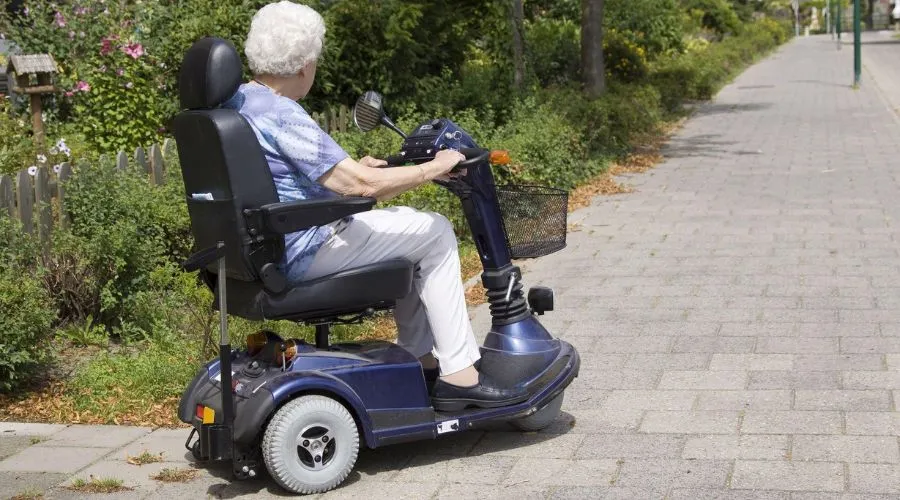
There are a number of different types of electric wheelchairs. The type of wheelchair that someone uses will depend on their individual needs. Here are some of the main types of electric wheelchairs:
The Mechanics of Electric Wheelchairs
The mechanics of an electric wheelchair are made up of the following components: battery, motors, joystick, and sensors. These components work together to power and control the wheelchair, allowing it to move forward, backward, and side to side.
Battery
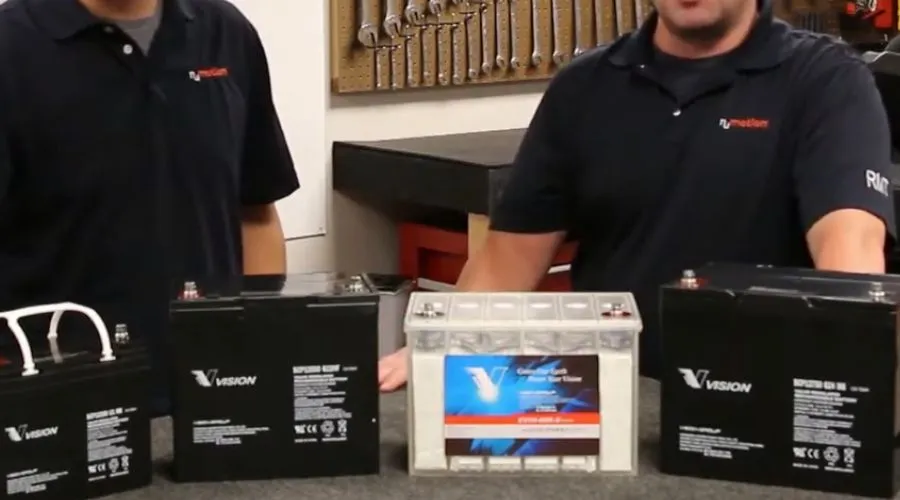
The battery is the powerhouse that powers an electric wheelchair. It is charged using an external source, such as a charging station or a car charger. Batteries are made up of individual cells, called electrochemical cells. These cells produce DC electricity and are able to store energy. Batteries are used widely in a range of devices, such as computers and mobile phones.
They are a useful source of electricity because they can be charged and discharged many times. There are a number of different types of batteries available for use in electric wheelchairs. The lead-acid battery is the most common type of battery used in electric wheelchairs. It is a heavy-duty and robust battery that provides reliable and efficient power.
Lead-acid batteries do, however, contain harmful chemicals, so they should be disposed of carefully. Lithium-ion batteries are another common type of battery used in electric wheelchairs. They are lightweight and have a high energy density. They are often used in wheelchairs that have a long-range, as they are able to store a large amount of energy.
Lithium-ion batteries also have a longer lifespan than other types of batteries. Another type of battery used in electric wheelchairs is the nickel-cadmium battery. This is a more environmentally friendly battery than lead-acid batteries, as it does not contain harmful chemicals.
Motors
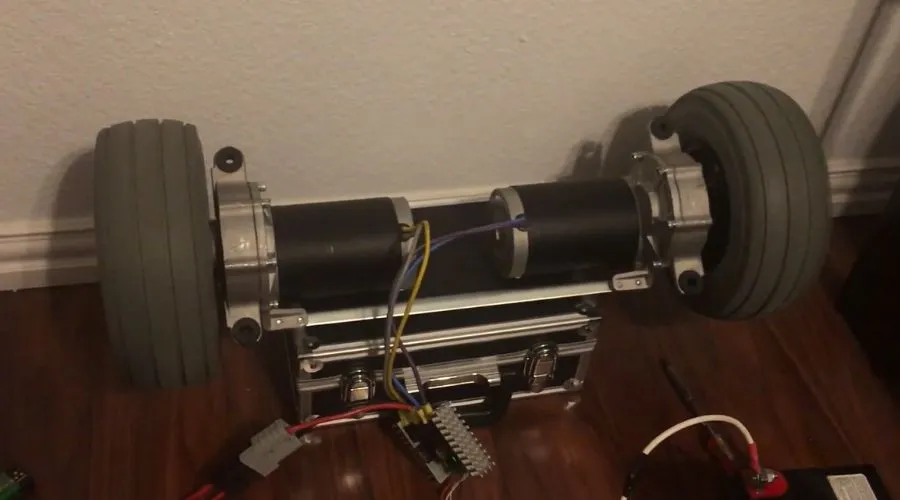
The motors generate the power that is needed to move the wheels of the wheelchair. There are two types of motors available in electric wheelchairs: DC motors and AC motors.
DC motors are simpler and quieter than AC motors, but they are less efficient. AC motors are more powerful, but they are also noisier. The motors in electric wheelchairs are housed in the rear wheels of the chair. Power wheelchairs usually have two motors, one for each wheel. They need more power than standard wheelchairs, as they are designed for going on rough terrain.
As the motors provide the power for moving the wheels, they are an important component of an electric wheelchair. Electric wheelchairs can be steered by rotating the wheels in different directions. The direction of the wheels is changed by wiring them to the motors so that they rotate in different directions.
Joystick
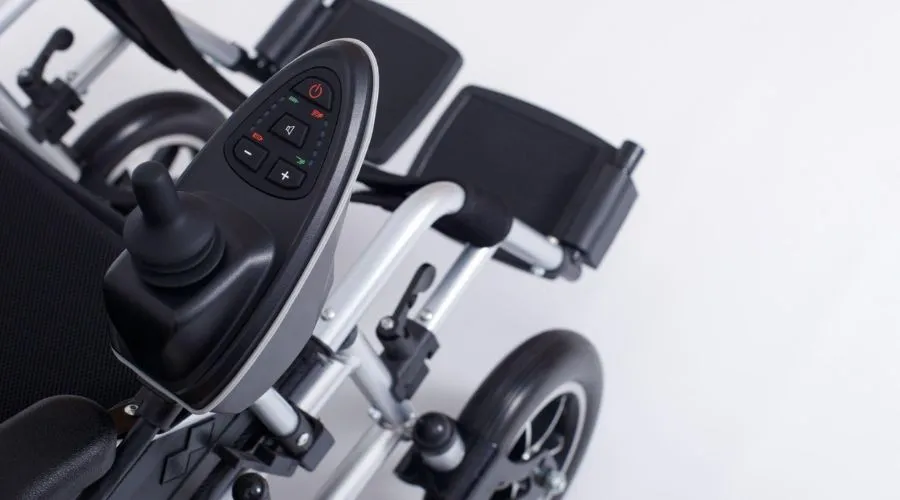
The joystick is the control that is used to operate the wheelchair. It allows the user to control the direction of the wheelchair and to move forward and backward, as well as sideways. The joystick is a small lever that can be moved in any direction, allowing the user to steer the chair. Many joysticks have an advantage over using a steering wheel, as they are easier to use.
They can also be used in a seated position, so they are ideal for people who are unable to stand. Joysticks can be fitted to both indoor and outdoor wheelchairs, and they are easy to use. The joystick allows the user to control the speed of the wheelchair, making it easier to drive than a standard wheelchair with a wheel.
Sensors

Sensors are used to enable movement in the wheelchair in certain conditions. For example, if the chair detects an obstacle in its path, it will automatically stop. Some electric wheelchairs also have sensors that detect light and rain, allowing them to be used indoors and outdoors.
Some electric wheelchairs are also able to detect the weight and pressure applied to the chair. They can be programmed to move at different speeds depending on the weight of the user. This means that heavy users can enjoy the same ease of use and speed as lighter users.
Benefits Of Electric wheelchairs
Electric wheelchairs are a great way to maintain your mobility and independence. They come in a variety of styles and sizes, so there is sure to be one that fits your needs. There are several advantages to using an electric wheelchair.
Frequently Asked Questions
How does a motorized wheelchair work?
The motorized wheelchair is powered by an electric motor that is connected to a battery, usually located beneath the seat. This battery powers the motors which are responsible for propelling the wheelchair forward. The motorized wheelchair is operated using a joystick, control pad, or switch, depending on the model. This is used to control the speed, direction, and other features of the motorized wheelchair.
The motorized wheelchair also features other features such as brakes, lights, and a horn. These features are designed to help keep the user safe while operating the wheelchair. Some motorized wheelchairs also feature adjustable footrests, armrests, and seating positions for added comfort and convenience.
How do electric wheelchairs turn?
Electric wheelchairs turn by using a combination of joystick and motor controls. The joystick is used to control the speed and direction of the chair. Depending on the type of electric wheelchair, the joystick may be located on the armrest or mounted near the chair’s main frame.
The motor controls are responsible for actually turning the wheels. Each wheel is powered by an electric motor, which is operated by the joystick’s signal. Generally, if you want to turn left, you will push the joystick either up or down, depending on the model. This signals the motors to activate, and the wheels will turn in the desired direction.
Many electric wheelchairs also have a feature called “active turning”. This is where the chair automatically turns slightly when it reaches a certain speed. This helps the user to stay in control while going around tight corners or making sharp turns.
Electric wheelchairs can also be programmed to turn in specific ways or at specific angles. Some modern models even have sensors that allow them to detect obstacles in their path and turn accordingly.
Ultimately, electric wheelchairs make it easier for those with limited mobility to get around. With the right combination of joystick and motor controls, they can turn and move with relative ease.
How far can an electric wheelchair go on one charge?
That highly depends on the size of the battery, the type of terrain you’re navigating, and the weight of the person using the wheelchair.
For example, a standard electric wheelchair with a 12-volt, 40-amp hour battery, can travel up to 8-10 miles on a single charge, depending on terrain and rider weight.
However, if the battery is larger (24-volt, 80-amp hour), that same wheelchair can travel up to 15-20 miles on a single charge. Additionally, if you are using the wheelchair on flat terrain and the rider is lightweight, you can get even more mileage.
It’s also important to note that electric wheelchairs come in different sizes, and some are designed for indoor use only. If you’re using an indoor electric wheelchair, you won’t get as much mileage as you would with an outdoor electric wheelchair.


